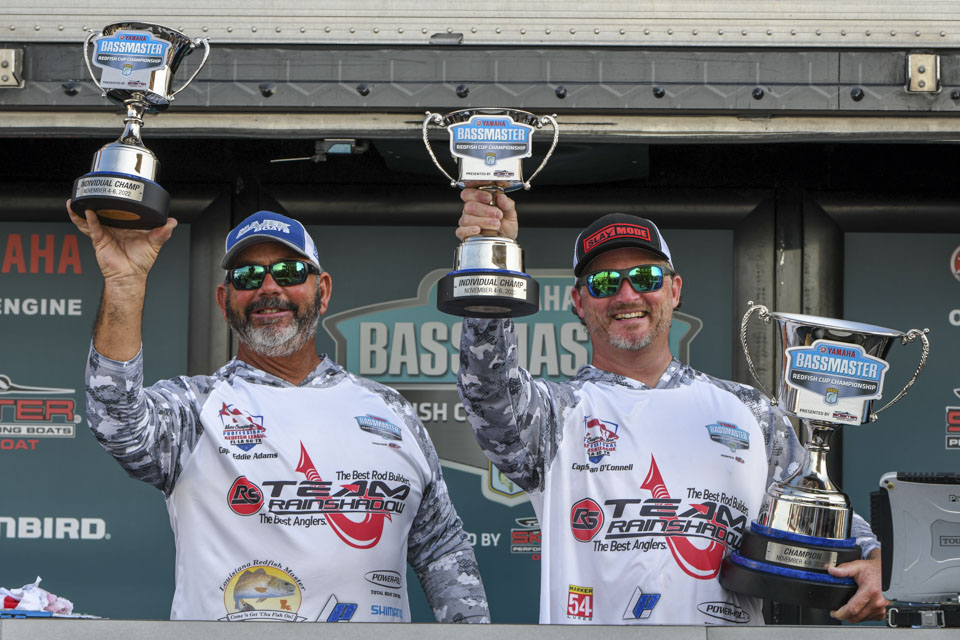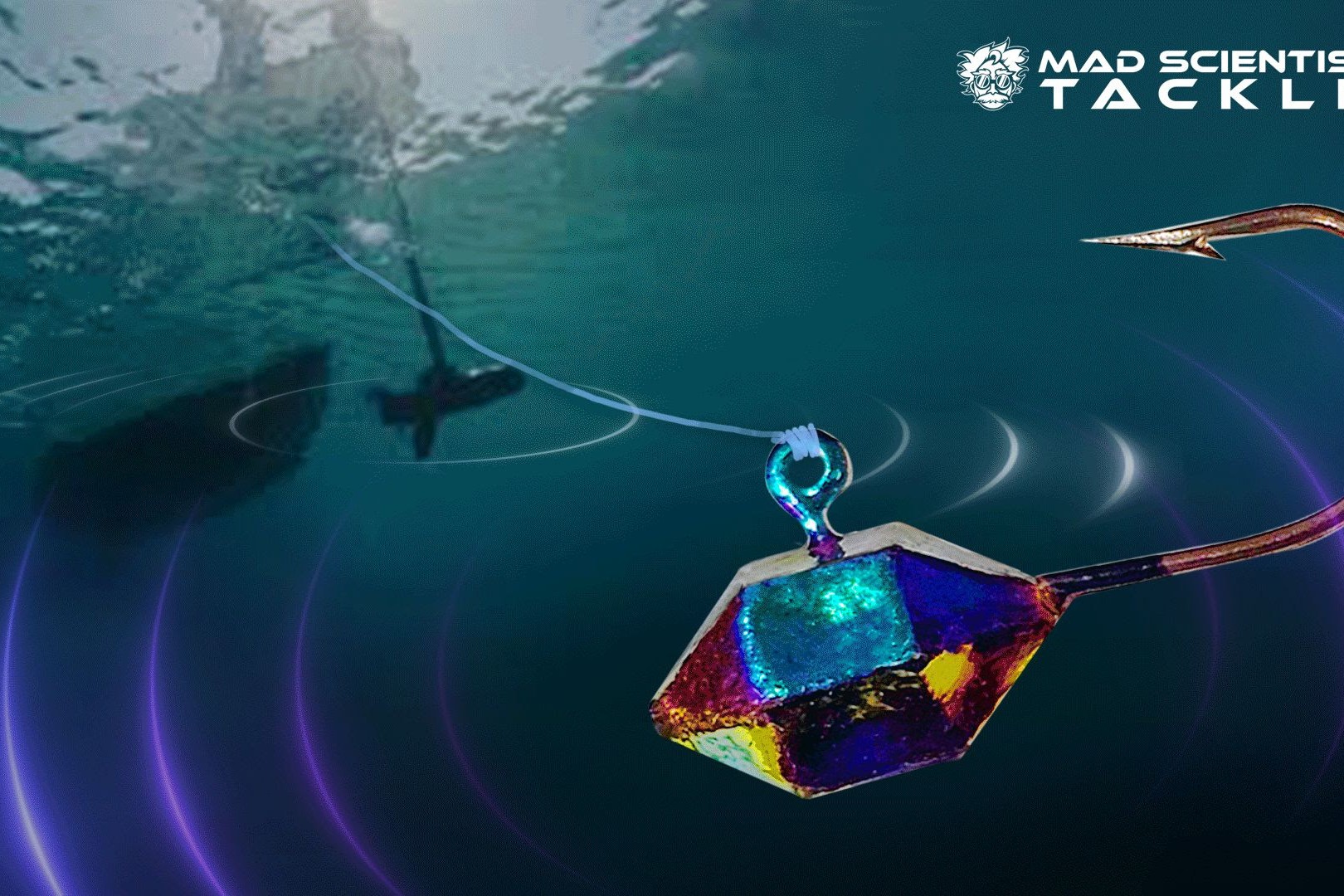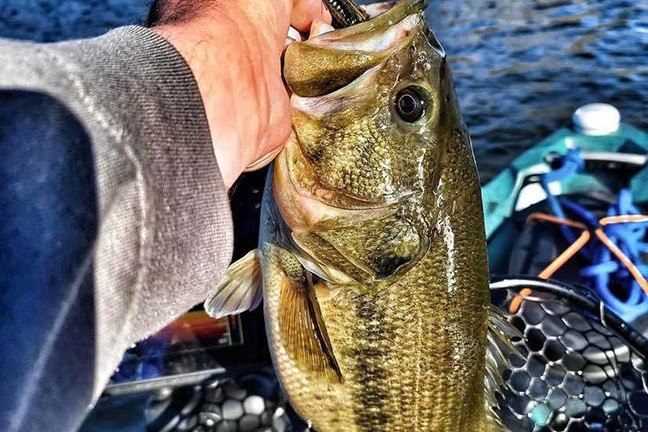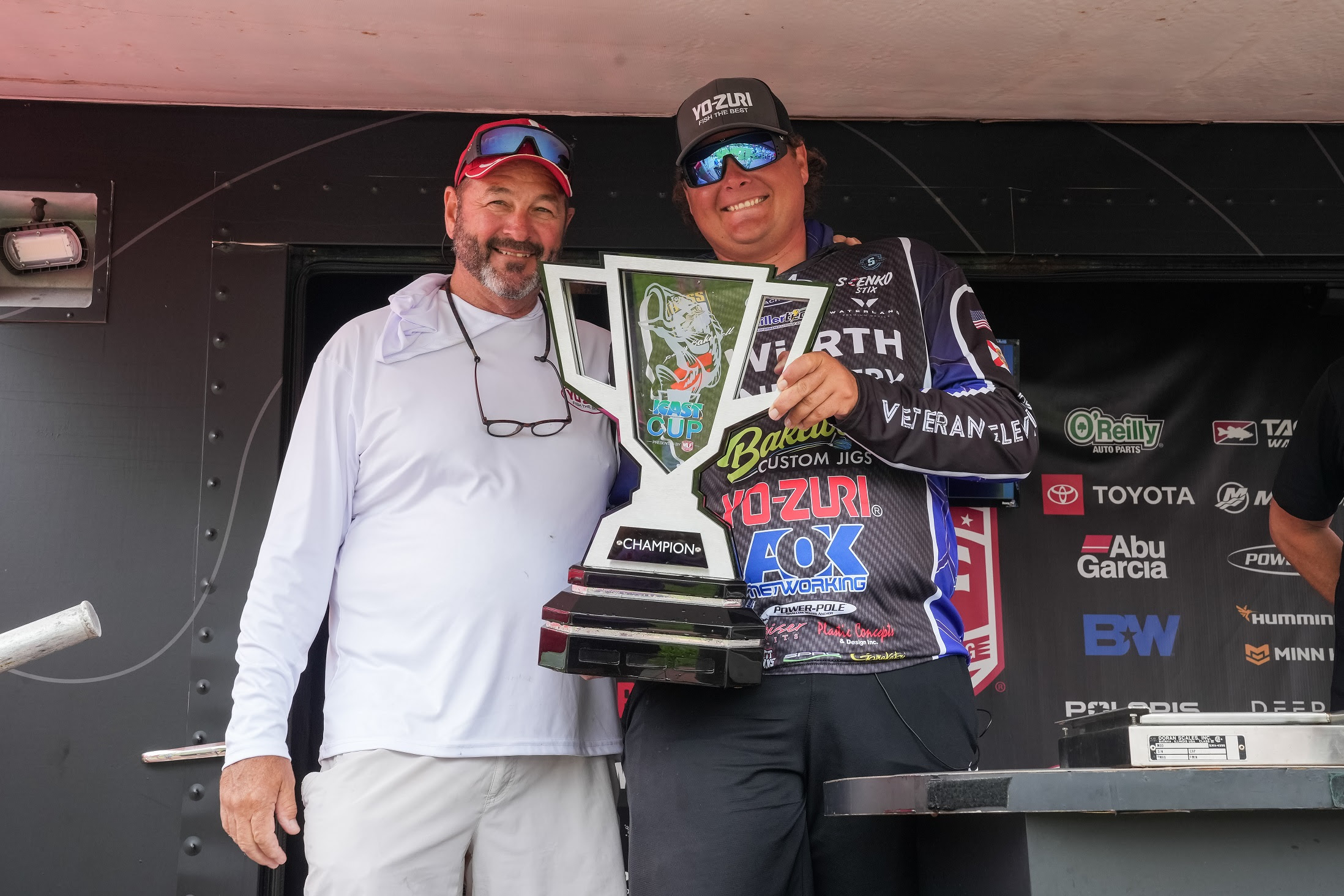Productive fall conditions await Redfish Cup Championship field at Winyah Bay
The 2022 defending champions Edward Adams and Sean O’Connell will be among the field when the 2023 Yamaha Bassmaster Redfish Cup Championship presented by Skeeter Boats takes on South Carolina’s Winyah Bay Oct. 27-29.
Photo by Andy Crawford/B.A.S.S.
October 20, 2023
GEORGETOWN, S.C. — During the 18th century, pirates staked out hidden bays and coastal islands in hopes of capturing their cut of the wealth flowing in and out of Georgetown’s deep-water port.
For three autumn days, 20 anglers will be snooping around some of the same areas in hopes of capturing the winning weight for the Yamaha Bassmaster Redfish Cup Championship presented by Skeeter Boats at Winyah Bay.
Competition days will be Oct. 27-29 with daily takeoffs from East Bay Public Ramp at 7:15 a.m. ET and weigh-ins each day at Francis Marion Park at 3 p.m. Fans can catch Bassmaster Redfish LIVE coverage all three days of the tournament on Bassmaster.com. FS1 will broadcast live Oct. 28-29 beginning at 8 a.m. ET.
“It should be a great time of year to be out there,” said Ryan Rickard, the Tampa, Fla., angler who won the 2021 Championship alongside Bassmaster Elite Series pro Chris Zaldain. (The pair placed second in 2022.) “The water temperatures have probably cooled down enough to make fish a lot more active than their summer patterns.”
Boasting a history rich with rice and indigo production, Georgetown’s commerce attracted marauding types such as Blackbeard, Anne Bonney, Mary Read and Calico Jack Rackham. The tournament will host a far more congenial group with 10 two-angler teams — six top-tier redfish duos and four all-star teams comprising Bassmaster Elite pros and talented redfish anglers.
Leading the all-star lineup, Rickard is the only angler who has competed both of the past two years. He will pair with Elite pro Justin Atkins, a past Forrest Wood Cup and St. Croix Bassmaster Opens champion hailing from Florence, Ala.
Leading the pure redfish teams will be Louisiana pros Sean O’Connell and Edward Adams, the Redfish World Series champions that won last year’s Redfish Cup Championship in Port Aransas, Texas. Adams said he’s hoping his vast experience guiding the Mississippi Delta marsh will translate into South Carolina success.
Making his first fishing trip to the Palmetto State, Adams expects to gather critical practice recon during the lowest tidal periods. This is when the sea draws back its curtain to reveal key details like oyster bars, rocks and subtle marsh drains.
“I would think a lot of these fish will be in the creeks or little (backwater) pools,” Adams said. “It’s easy to target these spots during low tide, but when they’re covered with water, I’d think you’ll have to blind fish them with spinnerbaits or popping corks (a jig or shrimp suspended beneath a noisy rattling cork).”
The East Coast’s fourth-largest estuary, Winyah Bay marks the southern end of South Carolina’s famous beaches known as the Grand Strand. The bay is fed from the north by the confluence of the Black and the Great Pee Dee rivers and the Waccamaw River, while the Sampit River inflows from the west, through Georgetown.
As Rickard points out, tournament days will start with high tides that slowly drop throughout the competition hours. Outgoing to low tides are generally considered favorable for redfish, as they pull food sources out of hiding.
Falling water also drains shallow arteries and Rickard said this unyielding truth should not be taken lightly.
“This year will be very different, because we’re fishing a lot more tidal flow,” Rickard said. “We’re fishing 6- to 7-foot tidal swings (as opposed to approximately 1 1/2 feet in coastal Texas). A lot of that style fishing is creek fishing and fishing on the Intracoastal Waterway, so you have to be sure that you’re in and out of areas quickly so you don’t get stuck for the rest of the day.”
Notably, the Winyah Bay area also holds a tremendous largemouth bass fishery that has twice attracted Bassmaster Elite Series events (2016 and 2019). Scott Canterbury, the 2019 Progressive Insurance Bassmaster Angler of the Year who partners with veteran redfish angler and charter captain Krista Miller, will be seeking to leverage his Winyah Bay knowledge.
“I am hoping the redfish on the South Carolina coast act like the largemouth bass,” Canterbury said. “I finished second in the 2019 Elite out of there and hope that my knowledge of tides pays off. Being able to run the tide at the right times is definitely going to be key.”
The previous two Redfish Cup Championship events, both held in Port Aransas, Texas, saw a mix of tried-and-true redfish baits and tactics and several traditional bass strategies produce competitive catches. While this event may see a similar mixing of styles, there will be a noticeable departure from the larger, more aggressive presentations that tempt giant reds.
“We won’t be throwing a lot of the same things we were throwing in Texas,” Rickard said. “You’re not targeting the bigger fish. You’re targeting a 23-inch fish, so you’ll probably downsize your bait quite a bit.”
As Rickard alluded, tournament anglers will be targeting redfish in South Carolina’s 17- to 23-inch slot. Each angler can weigh up to two fish per day for a total of four fish per team. These parameters contrast the previous two years’ events in which teams were allowed to weigh a total of two fish between 20 and 28 inches.
Although he and O’Connell clearly demonstrated their ability to put big redfish in the boat, Adams believes his background could provide a Winyah Bay advantage.
“In most of the tournaments I fish, we’re trying to catch 27- or 28-inch redfish (depending on state regulations), so trying to catch 23-inch redfish will be different,” Adams admits. “But that’s pretty much what I target every day when I’m guiding. When people are looking for fish to eat, that’s the size you want.
“Those smaller fish are usually in groups and they’re usually all the same size. There’s usually more of those little fish around than those big ones.”
Given the South Carolina slot size, plus Atlantic water that’s relatively cooler than the warm Gulf brine, Rickard expects much of the field to use smaller jigs with soft-plastic jerkbaits, Ned-style rigs and artificial shrimp baits. Other likely baits include topwaters, bladed jigs and gold spoons, as well as those popping cork rigs and spinnerbaits Adams mentioned.
“If someone has the knowledge of that place, I think the entire area could be in play, but my gut tells me the majority of the field is going to run south (through the Intracoastal Waterway) to McClellanville and Isle of Palms,” Rickard said. “To me, it’s better habitat, plus, the Winyah Bay area gets a lot of guide pressure, so I think a lot of us will be trying to get away from that.
“I think, given how the fishery allows you to fish, it would shock me if a team won in one area. You may have one area with multiple spots, but I think you’re going to have to cover a lot of water.”


















